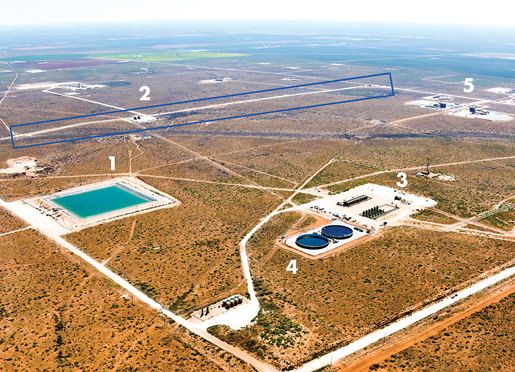Best Water Management Practices in the Permian Basin
Published on by Water Network Research, Official research team of The Water Network in Technology
Water management in unconventional resource plays has become a critical topic over the last several years. To improve project economics, several best practices have begun to emerge.
The evolution of water management in support of unconventional resource plays has come in response to two main drivers: 1) increasingly expensive freshwater resources; and 2) rising regulatory pressure surrounding the disposal of produced fluids.
Historically, the provision of fresh water to support fracturing operations was a relatively straightforward matter of rising costs and complicated logistics. As industrial, agricultural and residential users all continued to increase demand for limited freshwater resources, operators had to accept rising costs associated with acquiring the water needed for fracturing.
BEST PRACTICES

Fig. 1. Permian basin water management infrastructure. Via World Oil
TETRA Technologies has been a leader in working with operators to implement best practices for water infrastructure planning in the Permian basin. At the core of the company’s water management strategy is a layout of components to support area operations.
Figure 1 shows the water infrastructure arrangement employed by the company during a recent reuse project. This representative layout includes: 1) freshwater storage; 2) a produced water trunk line system; 3) gathering and treatment facilities for produced water; and 4) produced water storage and blending tanks. The entire arrangement is strategically located in proximity to several active fracturing locations (5).
The planning that supports the development of this water infrastructure includes estimating produced water volumes over the life of the field, as well as frac water volumes required during the completion phase. Additional planning considers the stimulation fluid types to be employed and the types of treatment required to bring recycled frac water in line with project specifications. Each of these factors is an important element in the overall water treatment strategy.
Produced water treatment.
Produced water is pumped to a centrally located gathering and treatment facility, where it is stored in above-ground storage tanks and the process of recycling begins. Typically, produced water in the Permian arrives at the facility with high levels of TDS and TSS.
Additional attributes include dispersed oil and grease, dissolved gases and bacteria, as well as traces of chemical additives used in production, such as biocides, scale and corrosion inhibitors, and emulsion and reverse-emulsion breakers...
Blending
One of the challenges addressed by the company relates to balancing produced water with other sources of water to meet final project specifications for the operator’s fracturing fluid system.
The company designed a patent-pending water blending controller and its patented blending manifold to ensure that recycled water is consistent throughout the entire frac specification.
The blending manifold allows operators to “dial in” their chemistries and work within a very narrow range. The automated blending setup is shown in Fig. 3...
Updated method.
A more efficient technique has been adopted by TETRA Technologies for use in the Permian basin and elsewhere. This method incorporates the energy of the fluids moving through conduits in a turbulent fashion to promote the blending of the fluids.
This approach is accomplished by pumping the constituents into a wye or multi-inlet manifold, where each input flow rate is controlled and, therefore, volumetric proportions are controlled.
A level of homogeneous blending normally results, if the water transfer system design and hydraulic parameters promote turbulent flow after the blending apparatus.
Using this method, real-time volumetric proportions are maintained, but TDS levels in the final fluid can vary as the source fluids vary..
Read more about each practice: World Oil
Media
Taxonomy
- Oil & Gas
- Resource Management
- Fracking
- Water Management
- Water Resource Management
- Fracking Technology